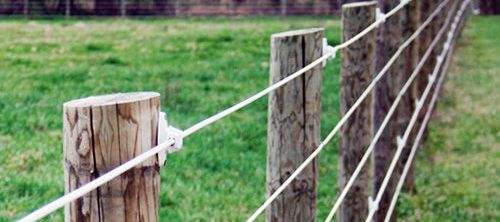
Shockingly Effective: The Ins and Outs of Electric Fencing Your Property
An electric fence is more than a barrier; it's a psychological deterrent and an essential tool for any rancher. As a ranch owner for many years, I've come to rely on electric fencing to manage my livestock efficiently and protect them from external dangers. In this extensive guide, I'll walk you through the benefits, installation tips, and maintenance practices of electric fencing.
Why Electric Fencing?
Electric fencing offers several advantages over traditional fencing:
Cost-Effectiveness: They are generally cheaper to install and maintain than conventional fences.
Flexibility: Easy to set up, modify, and move, making it ideal for rotational grazing.
Efficiency: Delivers a short, safe shock to deter animals, promoting good habits without harm.
Low Maintenance: Requires less upkeep compared to physical fences that can deteriorate or be damaged.
Planning Your Electric Fence
The key to a successful electric fence is in the planning:
- Assess Your Needs: Consider the type of livestock, the size of the area, and the primary purpose of the fence (containment or protection).
- Map It Out: Use a detailed property map to plan the layout, gate placements, and the location of the power source.
- Choose the Right Materials: Select the appropriate wire type, insulators, grounding system, and energizer based on your specific requirements.

Installation Essentials
Proper installation ensures effectiveness and longevity:
- Corner Posts: These should be sturdy and well-grounded, as they bear most of the tension.
- Line Posts: Can be made of various materials like fiberglass or plastic and spaced appropriately for your landscape.
- Wiring: Use high-quality conductive wire and ensure it's tensioned correctly.
- Grounding: A proper grounding system is crucial. At least three 6-foot grounding rods, spaced 10 feet apart, are recommended.
- Energizer: Choose an energizer with enough power for your fence length and number of strands. Solar-powered options can be excellent for remote areas.
Safety and Training
Safety for humans and animals is paramount:
- Visibility: Mark the fence with flags to ensure animals and people can see it.
- Training Livestock: Introduce your livestock to the fence in a controlled setting to teach them to respect it.
- Access Points: Create safe crossing points for people and equipment to avoid accidental shocks.
Maintenance Tips
Keep your electric fence in top condition with these tips:
Regular Checks: Walk the fence line regularly to check for vegetation touching the wires, broken insulators, or any other issues.
Vegetation Control: Keep the area under the fence clear of tall grass and brush which can ground the system and drain power.
Voltage Testing: Use a voltmeter to test the fence regularly to ensure it's delivering the right amount of power.
Winter Care: In snowy regions, adjust the bottom wire height to account for snow accumulation which can ground the fence.
Troubleshooting Common Issues
Sometimes things go wrong; here's how to handle common problems:
Loss of Power: Check the energizer, power source, and grounding system.
Intermittent Shocks: Look for loose connections or vegetation interference.
Animal Breaches: Reinforce training, and consider adding more strands or increasing the voltage slightly.
Other Supplies to Consider
SHOP ALL ELECTRIC FENCING PRODUCTS HERE
Electric fencing is a practical, versatile solution for ranch management. By understanding the ins and outs of electric fencing, you can create a barrier that's both humane and effective. With proper installation and maintenance, your electric fence will serve as a steadfast guardian of your property and livestock.




















